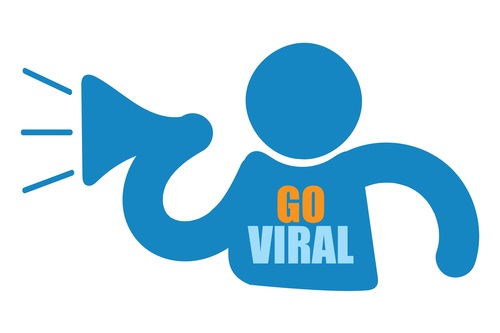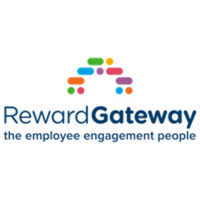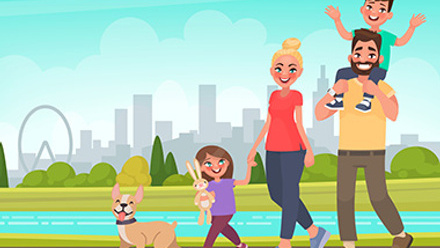Going viral: How to build word-of-mouth into staff comms strategy
It can deliver a huge return on investment purely from the fact that people typically trust a personal recommendation more than any marketing technique.

Going ‘viral’ is the term applied when an idea or advert is so shareable that people cannot help but tell their friends about it.
This traditionally happens organically, such as telling your colleague about the great movie you saw over your morning cup of tea, but in 2016 the consumer has more of a voice than ever before.
Services like TripAdvisor and Trust Pilot see booming business, not to mention the vast number of social networks we now have at our fingertips, so it’s not surprising that big marketing agencies are crawling all over each other to have their campaigns be the most talked about YouTube ad of the week.
But what does all of this have to do with your internal communications strategy?
Strategy is the key word here as, just like the big boys, we need to stop delivering internal messages like a simple update and start thinking of the ideas we want to spread as like a marketing campaign.
If you can build triggers into your messages that spark word-of-mouth promotion then you are onto a winner, and you will see the results of this quickly via the actions of your employees.
Here’s a few top tips that you can consider when trying to make your next employee comm spread like wildfire:
1) Make it exclusive:
I love to share - Facebook, Instagram, Pinterest, I’m on them all! Not everyone loves social media but whether online or offline pretty much everyone likes to share (whether they realise it or not).
More importantly we like to share information that makes us look good. This is called social currency and you can create this with messaging that creates a feeling of exclusivity.
A great example of this is the trend of speakeasy style restaurants and pop-ups in cities like London and New York. Thinking something is either secret or a limited-time offer makes it feel special and you are more compelled to tell someone about it.
While this might seem fairly removed from the way you would tell your employees about a new initiative, think about how you could use this when you are planning your next employee event. If people think there is only limited space it could supercharge your turnout.
2) Make it memorable
Your ideal result from your messaging is to make sure that your employees remember and use the initiative you are pitching to them. In Jonah Berger’s book “Contagious” he talks about the triggers, which is where you can build your communication in a way that your recipient will remember the information at the right time.
This could be placing something into their natural environment that relates to the action you are trying to prompt or building visuals into communications that represent the situation when they would need that message.
A great example here would be giving your employees an item that they would use when doing something relating to that benefit, which would in turn prompt them to talk about it.
3) Make it emotive
People share information that provokes a strong emotion, including awe, inspiration, humour or delight (as well as shock, anger and disgust - but it’s probably best to avoid those).
When people discover something that makes them happy they want to show it to someone else which then passes your message along the chain. Some of the most effective campaigns I have run for clients have involved elements of fun or surprise - as well as cryptic messaging and intrigue can also be a powerful emotion.
I’m often reminded of an old campaign we ran for a client whereby we convinced their CFO to send out a serious email asking staff to watch a video with an important business update. The surprise to staff was that the video was not the formal content they expected but instead a fun and vibrant cartoon with a dancing icon announcing the date of the next benefits launch. I’m reminded of it as our staff are still talking about it today.
4) Make it visible
The problem with getting anyone to do anything is that they usually don’t want to be the first. We can be fickle creatures and we like to be reassured by the actions of others, including relating to using a new product or service for the first time.
Have you ever walked past a great restaurant that you wanted to try simply because there was no one eating inside? The same will be true for any employee rewards you roll out.
You can turn this on its head however by choosing great advocates for your programme and sharing stories of how others have used the benefit - leading to a huge impact or increased trust and encouraging other employees to share their own stories.
5) Make it practical
Demonstrate how using your product or programme is going to benefit your target audience. This is where your employee benefits can really shine, as well as other projects or initiatives, as you can showcase specific rewards.
Highlight in numerical terms exactly how it will save them money, improve their health or generally make their lives easier. Finding the right ‘practical values’ that speak to your employees will be the hardest part, as not everyone is going to be motivated by the same things.
Consider segmenting your campaign to speak to different sections of your workforce to maximise the potential of them including this in their conversations.
So what can we learn from all of this? You can run yourself ragged trying to tell everyone about your latest news, however you can hugely cut down your workload if you can manage to spark word of mouth.
This is not something out of our control - there are a huge number of ways that we can influence, change and grow the conversation in our own workplaces. Start the chatting going in your own office today and see where it takes you.
Lisa Turnbull is communications manager at Reward Gateway.
This article supplied by Reward Gateway.
Supplied by REBA Associate Member, Reward Gateway
We help the world's leading companies with an employee engagement platform.







